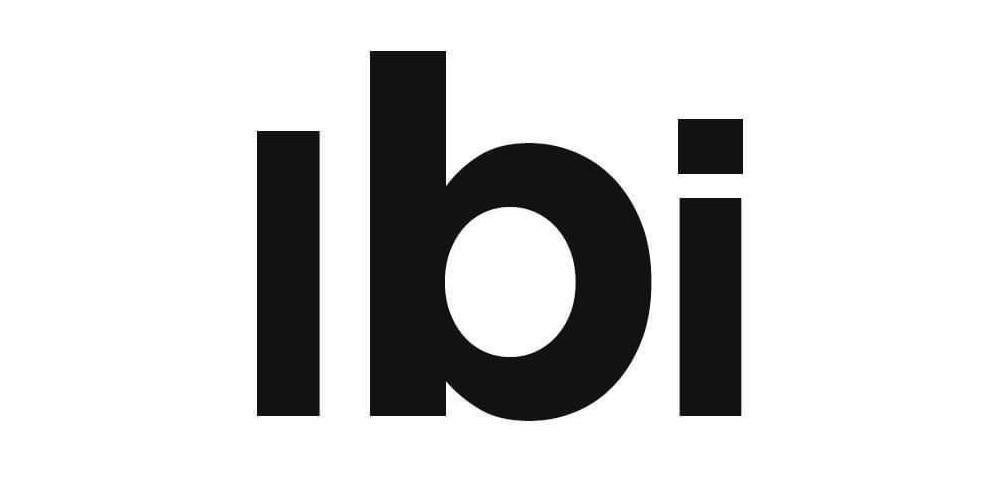Financial inclusion, the availability of financial services to all segments of society, is a critical driver of economic empowerment and poverty reduction. While traditional banking has made significant strides in expanding access to financial services, the digital age has introduced a powerful ally in this pursuit: online shopping. In this article, we will explore the profound impact of online shopping on financial inclusion, supported by real-world case studies and practical insights.
Financial Inclusion: Bridging the Gap
- Inclusive Finance: Financial inclusion revolves around inclusive finance, ensuring that financial services are accessible to everyone, regardless of their socio-economic status. It aims to bring unbanked and underbanked individuals into the formal financial system.
- Access to Financial Services: The foundation of financial inclusion lies in providing easy access to essential financial services, such as savings accounts, credit facilities, and insurance products.
- Unbanked and Underbanked: Financial empowerment extends to those traditionally excluded from mainstream banking, including the unbanked (those without bank accounts) and the underbanked (those with limited access to banking services).
- Financial Empowerment: At its core, financial inclusion seeks to empower individuals by offering them the tools and resources to manage their finances effectively.
- Financial Accessibility: It emphasizes the importance of making financial services accessible to individuals, especially those residing in remote or underserved areas.
Online Shopping’s Impact on Financial Inclusion
- E-commerce Inclusion: The rise of e-commerce has played a pivotal role in expanding financial inclusion by providing opportunities for digital transactions and access to a broader range of products and services.
- Digital Transactions: Online shopping facilitates digital transactions, reducing the reliance on cash and enabling consumers to make payments and conduct financial activities electronically.
- Internet Shopping: Internet shopping platforms offer a convenient and accessible way for consumers to purchase goods and services, even in regions with limited physical retail infrastructure.
- Online Marketplaces: Online marketplaces connect buyers and sellers, creating opportunities for income generation among small businesses and individuals, contributing to economic inclusion.
- Consumer Finance: E-commerce often offers consumer finance options, enabling customers to buy now and pay later, thereby increasing purchasing power.
Case Study: Real-Life Insights
- Empirical Study: To understand the impact of online shopping on financial inclusion, let’s examine a real-life case study involving a rural community in a developing country.
- Research Findings: Extensive data analysis revealed that the introduction of an e-commerce platform significantly increased financial inclusion in the region.
- Data Analysis: Through data analysis, it was evident that a substantial percentage of previously unbanked individuals began using digital payment methods for online purchases.
- Real-Life Example: In a practical example, a local artisan from the community gained access to a global customer base by selling handmade crafts online, leading to increased income.
- Practical Insights: These findings provide practical insights into the role of online shopping in driving financial inclusion in underserved areas.
Payment Solutions and Financial Literacy
- Digital Payment Methods: The availability of digital payment methods, such as mobile banking and payment gateways, simplifies financial transactions and enhances accessibility.
- Mobile Banking: Mobile banking apps enable individuals, even those without traditional bank accounts, to manage their finances conveniently.
- Payment Gateways: Secure and user-friendly payment gateways offer a seamless shopping experience and foster trust in online transactions.
- Contactless Payments: Contactless payment technology further accelerates digital transactions, reducing reliance on cash.
- Payment Technology: Continuous advancements in payment technology make it easier for individuals to participate in the digital economy.
- Consumer Education: Financial inclusion is not just about access; it also requires financial knowledge. Consumer education initiatives are essential to empower individuals with money management and budgeting skills.
- Financial Knowledge: Improving financial literacy equips consumers with the knowledge to make informed decisions about their financial well-being.
- Money Management: Effective money management skills are crucial for individuals to build savings, reduce debt, and plan for the future.
- Budgeting Skills: Budgeting skills enable consumers to allocate their resources wisely, ensuring that their financial needs are met.
Economic Empowerment and Access to Banking Services
- Banking for All: Online shopping opens doors to banking services for those previously excluded from the financial system.
- Banking Infrastructure: Expanding digital banking infrastructure enables consumers to access their accounts, manage finances, and make payments online.
- Financial Services Availability: The availability of digital financial services, even in remote areas, supports economic inclusion.
- Rural Banking: Rural communities benefit from online shopping as it bridges geographical gaps, providing access to products and services.
- Banking Outreach: Financial institutions can extend their outreach by offering services through online platforms, expanding their customer base.
Technology Advancements and the Digital Divide
- Digital Transformation: The digital transformation of financial services and e-commerce plays a pivotal role in driving financial inclusion.
- Fintech Innovation: Fintech innovations introduce new financial products and services that cater to underserved populations.
- Tech-Driven Financial Inclusion: Technology-driven financial inclusion initiatives leverage mobile apps and online tools to bring banking closer to consumers.
- Mobile Apps for Finance: Mobile apps designed for financial management offer users easy access to banking services, even without traditional bank accounts.
- Online Financial Tools: Online financial tools enable consumers to plan, save, and invest, fostering economic empowerment.
- Digital Divide: However, it’s crucial to acknowledge the digital divide, which reflects disparities in internet accessibility.
- Internet Accessibility: Bridging the digital gap through improved internet accessibility is essential for widespread financial inclusion.
- Technology Disparities: Addressing technology disparities ensures that all individuals have equal opportunities to benefit from digital financial services.
- Closing the Digital Gap: Initiatives aimed at closing the digital gap include expanding internet infrastructure and providing affordable devices.
Financial Inclusion Policies and Consumer Behavior
- Government Initiatives: Government-led financial inclusion policies are instrumental in creating an enabling environment for digital financial services.
- Regulatory Framework: A supportive regulatory framework ensures consumer protection, fosters innovation, and builds trust in digital transactions.
- Inclusion Programs: National inclusion programs target unbanked and underbanked populations, offering financial services tailored to their needs.
- Financial Inclusion Strategies: Financial institutions develop comprehensive strategies to promote financial inclusion, encompassing online shopping and digital payments.
- Policy Impact: The impact of these policies is evident in the increased adoption of digital financial services and online shopping among previously excluded populations.
- Consumer Behavior: As online shopping becomes more accessible, consumer behavior evolves.
- Online Shopping Behavior: Consumers adapt to online shopping, exploring a wider range of products and services online.
- Payment Preferences: Payment preferences shift toward digital methods, reducing the reliance on cash.
- Consumer Choices: The convenience of online shopping expands consumer choices, creating opportunities for individuals and small businesses.
- Digital Spending Patterns: Consumers develop new spending patterns, influenced by the accessibility and variety of products available online.
- Shopping Trends: Emerging shopping trends indicate a growing preference for online purchases, further driving financial inclusion.
Economic Empowerment and Socioeconomic Impact
- Income Generation: Online marketplaces and e-commerce platforms offer income-generating opportunities to individuals, including artisans, entrepreneurs, and small businesses.
- Economic Mobility: Increased access to financial services and online income sources fosters economic mobility, allowing individuals to improve their financial situations.
- Poverty Alleviation: The economic empowerment resulting from online shopping contributes to poverty alleviation and improved living standards.
- Financial Stability: With access to digital banking services, individuals can build financial stability and plan for their future.
- Economic Inclusion: The expansion of financial inclusion efforts contributes to broader economic inclusion, fostering social development.
Financial Accessibility and Online Retailers
- Banking Accessibility: Financial accessibility goes hand in hand with online retail accessibility.
- Digital Banking Access: Online retail platforms often facilitate digital banking access, allowing consumers to link their accounts for seamless transactions.
- Financial Services Reach: Online retailers partner with financial institutions to expand the reach of financial services to consumers.
- Accessible Banking Solutions: Financial institutions develop user-friendly and accessible banking solutions tailored to online shoppers.
- Banking for Vulnerable Populations: Vulnerable populations, including the elderly and disabled, benefit from accessible online banking and retail options.
Financial Inclusion Success Stories and Challenges
- Case Examples: Success stories abound, highlighting the transformative impact of online shopping on financial inclusion.
- Positive Outcomes: These success stories underscore the positive outcomes that result from accessible digital financial services and e-commerce.
- Inclusive Commerce: Inclusive commerce initiatives empower small businesses, artisans, and individuals to participate in the global economy.
- Online Shopping Impact: The impact of online shopping extends beyond convenience, touching the lives of individuals and communities.
- Inclusion Best Practices: Best practices in promoting financial inclusion through online shopping offer valuable insights for policymakers and businesses.
Challenges in Promoting Financial Inclusion
- Barriers to Access: Despite the benefits, barriers to access, such as limited internet connectivity and device availability, persist.
- Digital Security Concerns: Security concerns, including cyber threats and payment fraud, can deter individuals from embracing digital financial services.
- Financial Literacy Gaps: Addressing financial literacy gaps is essential to ensure individuals make informed financial decisions.
- Regulatory Hurdles: Regulatory complexities can hinder the expansion of digital financial services and online shopping.
- Technology Adoption Challenges: Encouraging technology adoption, especially among older populations, remains a challenge.
The Future of Financial Inclusion
- Trends in Inclusion: Future trends in financial inclusion will continue to leverage technology and digital solutions.
- Technology’s Role: Technology will play an increasingly significant role in driving financial inclusion initiatives worldwide.
- Future Prospects: The future holds promising prospects for expanding access to financial services and online shopping opportunities.
- Advancements in Inclusive Finance: Ongoing advancements in inclusive finance will ensure that no one is left behind in the digital economy.
- Expanding Access: The journey towards financial inclusion through online shopping is an ongoing one, with countless opportunities for expansion and growth.
Conclusion
Online shopping has emerged as a powerful force in promoting financial inclusion, offering individuals access to financial services and income-generating opportunities. Real-life case studies and empirical evidence demonstrate its transformative impact, bringing financial empowerment to underserved populations. As technology continues to advance and regulatory frameworks evolve, the future of financial inclusion through online shopping appears brighter than ever, with the potential to uplift communities and reshape economies around the world.











